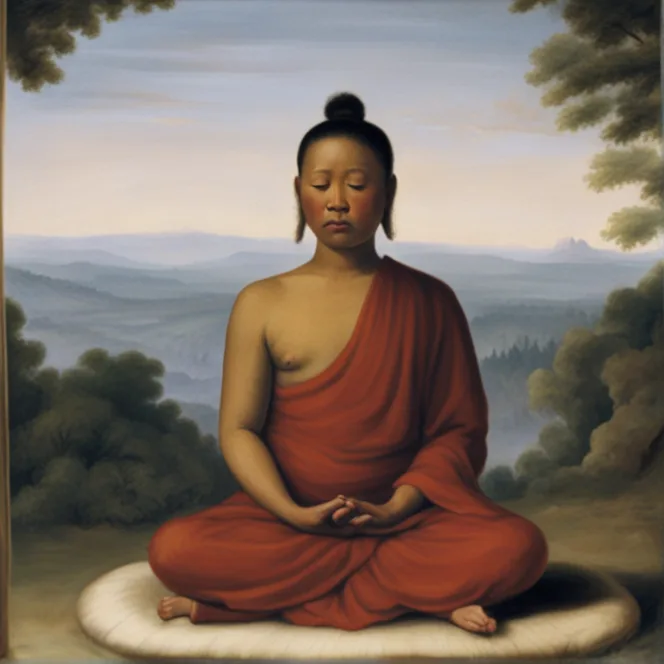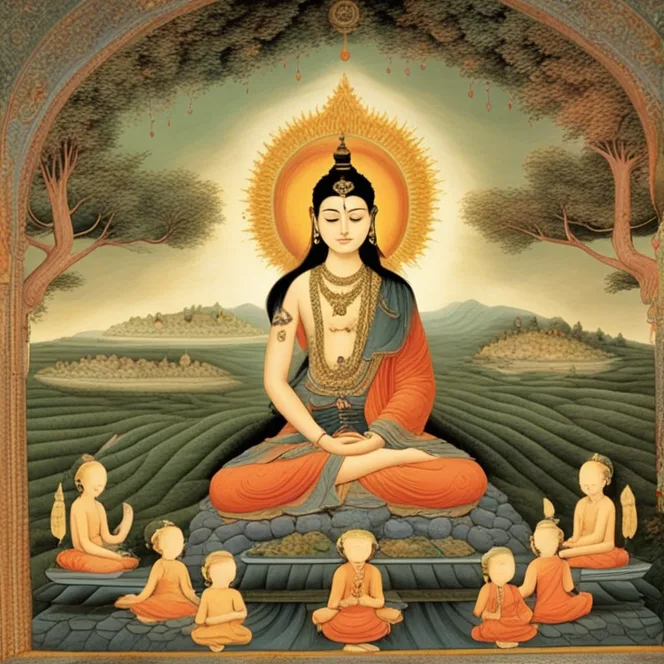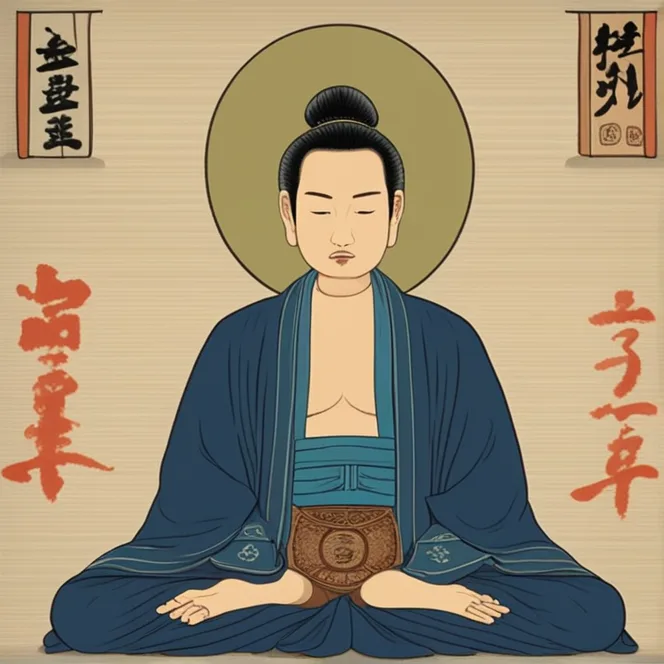
The Origins Of Meditation
Explore the ancient roots and historical journey of meditation – from Vedic traditions to modern practices.
article by Hina Kurosawa
A Timeless Practice
Meditation, as a practice of focused attention and heightened awareness, traverses thousands of years, with its origins deeply rooted in ancient traditions. The earliest documented records date back to around 1500 BCE in India, where meditation was an essential aspect of Vedic religious practices. These age-old techniques were aimed at transcending normal states of consciousness and achieving spiritual insight or enlightenment. Over time, meditation evolved, taking numerous forms and being adopted by diverse cultures and religions across the globe.

Vedas to Buddhism
The wisdom of the Vedas, a collection of ancient Indian texts, laid the groundwork for various meditative techniques. As these practices spread, they reached a seminal point with the emergence of Buddhism. Siddhartha Gautama, later known as the Buddha, mastered meditation and made it central to his teachings around the 6th century BCE. The Dhyana, or meditation practice in Buddhism, strives for a state of perfect tranquility and insight—a goal that underpins much of Buddhist philosophy.

Taoist and Confucian Contributions
Concurrently in China, meditation was integral to Taoist and Confucian traditions. Taoist meditation aimed at aligning oneself with the Tao, the fundamental nature of the universe, through breathing techniques and movement practices like Qigong. Confucianism, on the other hand, used meditation as a means of contemplation and moral development, highlighting its ethical and reflective dimensions.

The Middle Eastern Influence
To the west, in the Middle East, practices echoing meditation were also in development. Sufism, the mystical Islamic tradition, practiced Muraqaba—a form of meditation involving the contemplation of divine attributes, while early Jewish mysticism had hitbodedut and hitbonenut, forms of self-seclusion and introspective techniques to achieve spiritual elevation.

Western Adoption and Adaptation
Meditation entered Western consciousness more prominently with the spread of Eastern spirituality during the 19th and 20th centuries. The transcendentalist movement, led by figures like Ralph Waldo Emerson and Henry David Thoreau, embraced meditation’s introspective aspects, paralleling it with nature contemplation. Later on, the mid-20th-century counterculture movement, along with scientific research on meditation's benefits, paved the way for its broad acceptance and incorporation into health and wellness regimens.
A Modern Melting Pot
Today, meditation’s diversity reflects its multifaceted journey through time and culture. Techniques vary from mindfulness, which emphasizes present-moment awareness, to transcendental meditation, which focuses on mantra repetition. Regardless of the method, modern meditation is lauded for its numerous benefits on mental and physical health, becoming an integral part of contemporary life for millions seeking relaxation, stress reduction, and spiritual growth.
Published: 12/6/2023
Modified: 12/6/2023
More predictions
Come back here soon to learn more about yourself and your future


Meditation & Martial Arts: The Inner Fight
Martial arts have long been celebrated for their physical prowess and combat techniques, but beneath the surface lies a profound connection with the mind. The synergy between meditation and martial arts is a marriage of discipline, focus, and self-awareness that transcends mere combat. In this exploration, we delve into the world where inner and outer strength converge, uncovering the role of meditation in the practice of martial arts.


Meditation & Therapy: Complementary Or Alternative?
Explore the potential of meditation in relation to traditional therapy, its benefits, limitations, and the possibilities of integrating both practices for mental wellness.


The Difference Between Meditation & Mindfulness
Explore the distinct features of meditation and mindfulness to comprehend their unique benefits and roles in enhancing well-being.